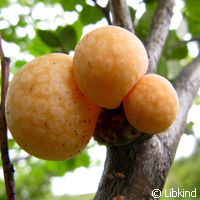Researchers piece together lager yeast puzzle
Is a wild yeast that travelled from one part of the Earth to another the basis of the lager beer that today's consumers like to drink? An international research team believes it has found that wild yeast. The study shows how the yeast, found in the beech forests of Patagonia, the alpine region located in Argentina and Chile, was the key ingredient that gave rise to cold-temperature fermentation and lager beer. The findings are published in the journal Proceedings of the National Academy of Sciences (PNAS). People's transition from nomadic to sedentary lifestyles as well as the demographic expansion were fuelled by the domestication of plants and animals. But what about the processes of microbe domestication? While scientists and brewers have long recognised that the yeast that allows beer to ferment at cold temperatures was a hybrid, they were only aware of the one that was used to make leavened bread and fermented wine and ale: Saccharomyces cerevisiae. In this study, researchers from Argentina, Portugal and the United States say lager beer, which was first brewed in the 15th century, uses an allotetraploid hybrid yeast, what experts call Saccharomyces pastoriannus, a domesticated species resulting from the fusion of a S. cerevisiae ale-yeast with an unknown cryotolerant Saccharomyces species. The end result was a medley of species that led to lager, the cold-fermented beer first brewed by 15th century Bavarians and currently enjoyed by millions of people the world over. 'We report the isolation of that species and designate it Saccharomyces eubayanus sp. nov. because of its resemblance to Saccharomyces bayanus (a complex hybrid of S. eubayanus, Saccharomyces uvarum, and S. cerevisiae found only in the brewing environment),' the authors of the study write. 'People have been hunting for this thing for decades,' says co-author Professor Chris Todd Hittinger of the University of Wisconsin-Madison in the United States. 'And now we've found it. It is clearly the missing species. The only thing we can't say is if it also exists elsewhere (in the wild) and hasn't been found.' The newfound yeast, Saccharomyces eubayanus, was a global collaboration, led by José Paulo Sampaio and Paula Gonçalves from New University of Lisbon in Portugal. Seeking to get to the bottom of the lager yeast mystery, the Portuguese researchers probed European yeast collections and scientific papers and collected new yeasts from European environments. Despite their attempts, no candidate species of European origin emerged. So the search expanded to other parts of the world. Diego Libkind, the lead author of the study, from the Argentinean-based Institute for Biodiversity and Environment Research (CONICET) found in galls that infect beech trees a candidate species whose genetic material is seemingly closer to the missing half of the lager yeast. 'Beech galls are very rich in simple sugars,' Professor Hittinger says. 'It's a sugar rich habitat that yeast seem to love.' Dr Libkind says the yeast is very active in the galls that they ferment spontaneously. 'When overmature, they fall all together to the (forest) floor where they often form a thick carpet that has an intense ethanol odour, most probably due to the hard work of our new Saccharomyces eubayanus.' The international team then sequenced its genome. 'It proved to be distinct from every known wild species of yeast, but was 99.5% identical to the non-ale yeast portion of the lager genome,' Professor Hittinger says. 'Our discovery suggests that hybridisation instantaneously formed an imperfect 'proto-lager' yeast that was more cold-tolerant than ale yeast and ideal for the cool Bavarian lagering process. After adding some new variation for brewers to exploit, its sugar metabolism probably became more like ale yeast and better at producing beer.'For more information, please visit:CONICET:http://www.conicet.gov.ar/web/conicet/inicio PNAS:http://www.pnas.org/
Countries
Argentina, Chile, Portugal, United States



